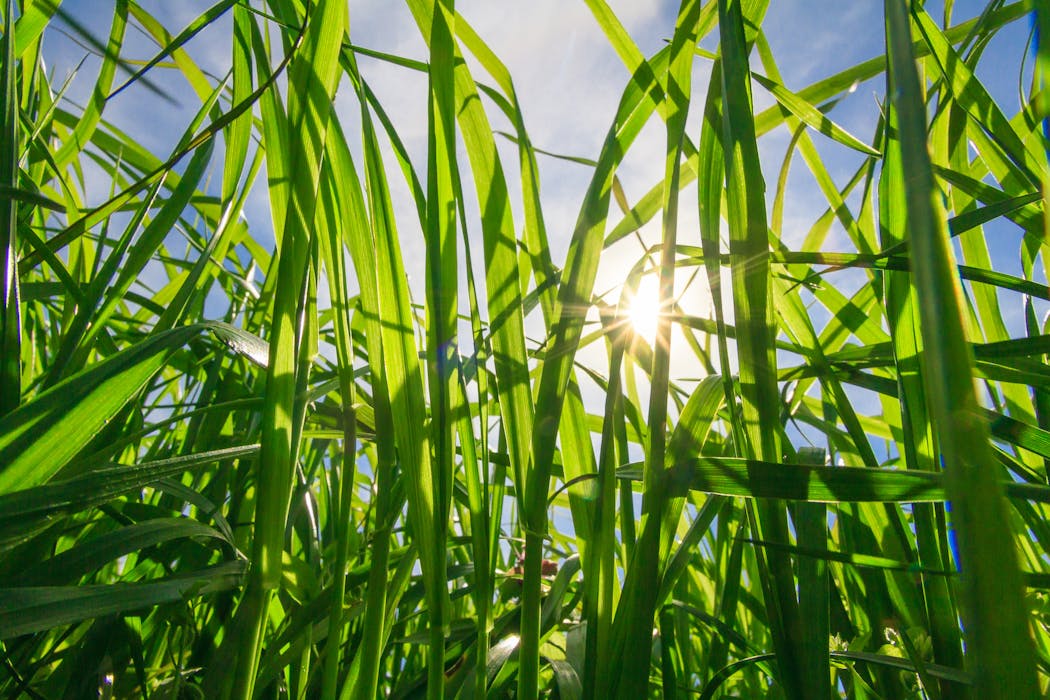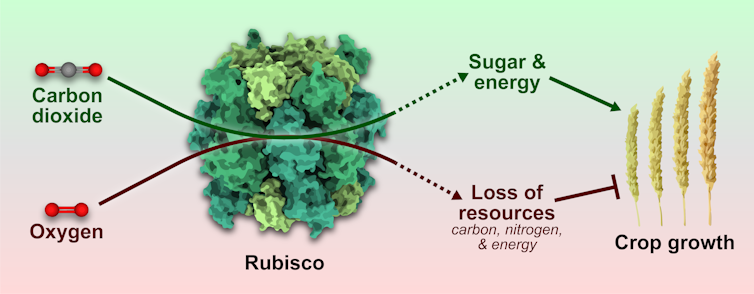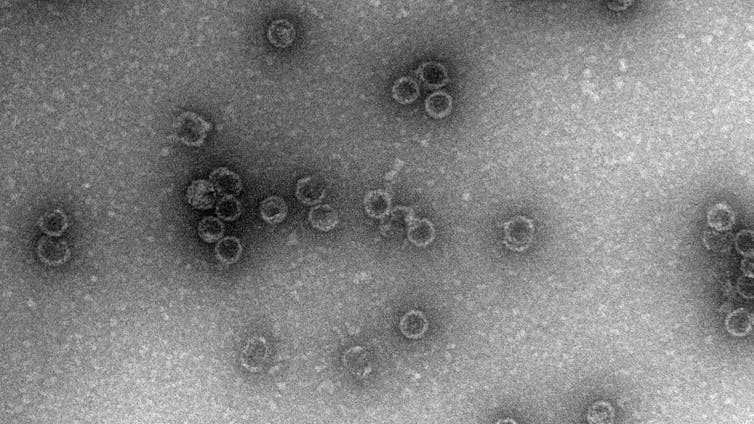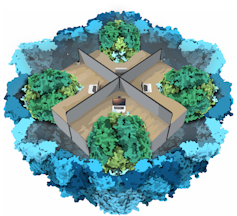
As Earth’s population grows, we will need more food. According to one estimate, we may need to nearly double our crop yields in the next century to keep up.
At the same time, climate change and wild weather events are making it harder than ever to grow food. We are faced with a complex problem, but one thing is certain: we will need to grow better, more productive crops.
Crops have already gone through aeons of evolution and millennia of human selection, so improving their growth even further isn’t easy. That’s where synthetic biology comes in: using engineering principles to build better biological systems.
In a new study published today in Nature Communications, we present a step towards more productive crops: a simple, tiny box made of proteins that can help plants use nitrogen and water more efficiently.
An important but inefficient enzyme
At school, you probably learned about photosynthesis: the solar-powered process where plants take carbon dioxide (CO₂) from the air and convert it to sugars that they use for energy. They use this energy to grow (and for crops, this means providing food for us).
An enzyme called Rubisco is a crucial player in photosynthesis. It is responsible for the first step of using CO₂ to make sugars.

Rubisco just might be the most important enzyme on Earth. However, it acts slowly and sometimes reacts with oxygen instead of CO₂, wasting valuable resources. These shortcomings mean Rubisco is a significant bottleneck to plant growth.
To compensate, so-called C3 crops (a group which includes wheat, rice, canola and many others) mass-produce Rubisco to help with photosynthesis. This comes at a huge cost, wasting energy, water and nitrogen.
Learning from algae
On the other hand, cyanobacteria (also called blue-green algae) have taken a more elegant approach. They have evolved a “carbon-concentrating mechanism”, increasing the amount of CO₂ surrounding Rubisco to keep it on task.
As part of this system, they house Rubisco in specialised compartments called carboxysomes. This creates an ideal space where the enzyme can function more efficiently – a bit like a microscopic office with no distractions.
If C3 crops had a similar system, it could increase crop yields by up to 60%. Scientists have been trying to engineer such a system into these crops for many years, but it’s complicated.
A simpler container
The carboxysome compartment alone consists of many different proteins which must all cooperate in a precise manner. A simpler compartment that does the same job would be easier to work with.
As synthetic biologists, we often repurpose biological parts to play new roles.
In this case, we looked at encapsulins: these are nanoscale cellular storage boxes typically found in bacteria or archaea. They have one great feature for our purposes, which is that they are simple and easy to make – built from many copies of just a single protein stuck together.

We are engineering encapsulins to make something like a carboxysome that is compatible with C3 crops.
Getting Rubisco to work harder
Our first step was packaging active Rubisco inside an encapsulin compartment. We immediately noticed the timing was critical.
If we tried to produce both Rubisco and encapsulin at the same time, the Rubisco we packaged wasn’t active. However, if we produced the Rubisco first and the encapsulin second, the packaged Rubisco was active.
With the timing sorted, we managed to create encapsulin protein cages that could function with three different types of Rubisco.

There is still a way to go before we have supercharged crops – but our path is clear. We will incorporate other parts of the carboxysome and carbon-concentrating mechanism to build an ideal workspace for Rubisco, and engineer that into crop plants.
Taylor Szyszka receives funding from the Australian Research Council.
Davin Saviro Wijaya receives funding from the Australian Research Council and an ANU University Research Scholarship.
Yu Heng Lau receives funding from the Australian Research Council, the National Health and Medical Research Council, and Cancer Institute NSW.
This article was originally published on The Conversation. Read the original article.







